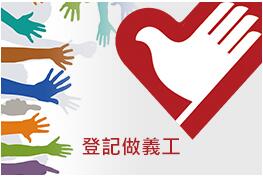About Rare DiseasesRare Disease Wiki

Rett Syndrome (RTT)
Name of disease:
Rett Syndrome (RTT)ICD-10 diagnosis code:
F84.2Causes:
Rett syndrome is a rare genetic neurological disorder. Rett syndrome is typically caused by changes (mutations) in the MECP2 gene.Pattern of inheritance:
The pattern of inheritance is X-linked dominant. However, only less than 1% of recorded cases are inherited. Most cases are sporadic, which means the mutation occurs randomly, and are not inherited.
Prevalence:
1/10,000 – 15,000 live female birthsDiagnosis:
Diagnosis is based upon identification of characteristic symptoms, a detailed patient history, and a thorough clinical evaluation. A variety of specialized tests may be conducted to rule out other conditions that can cause similar symptoms. Molecular genetic testing can detect the presence of mutations of the MECP2 gene and confirm the clinical diagnosis of Rett syndrome.
Age of onset:
From 6 to 18 months of lifeCommon signs and symptoms:
Rett syndrome in four stages: Stage 1 (6 – 18 months of age, early onset stagnation): Lack of eye contact and disinterest in other people, toys and the surroundings Passive and quiet Like rubbing hands Deceleration of head growth Stage 2 (1 – 4 years of age, rapid development regression): Gradual loss of speech Stereotypic hand movements such as washing, wringing, rubbing, clapping, etc. Occasionally, hand wringing may occur behind the back Tongue protrusion Teeth grinding (bruxism) Panting, spitting and hypersalivationSleep disturbances Unsteady walk Growth retardation of head circumference Autistic-like features such as loss of social interaction and communication Stage 3 (2 – 10 years of age, pseudostationary period) Severe impartment of communication and motor skills Irritability and crying spells Hypertonia, spasticity and scoliosis Less autistic-like features, more interested in surroundings and improvement in communication Some girls remain in this stage for the rest of their lives Stage 4 (after 10 years of age, late motor deterioration) Complete wheelchair dependence Constipation Cognition, communication, or hand skills generally do not decline Reduced frequency of repetitive hand movements Improvement in eye gaze
Available treatments (medicinal and non-medicinal):
There is no cure for Rett syndrome. Treatment for the disorder is symptomatic — focusing on the management of symptoms — and supportive, requiring a multidisciplinary approach. Medication may be needed for breathing irregularities and motor difficulties, and anticonvulsant drugs may be used to control seizures.
Disease management tips:
Early developmental intervention is important to ensure that affected children reach their potential. Most affected children will benefit from occupational, physical, speech, rehabilitative and behavioral therapy. Additional medical, social and/or vocational services including special remedial education may be necessary. Wearing gloves can help to prevent skin infection caused by repetitive hand rubbing or biting. Drinking more water, increasing daily activities, toilet training, intra-oral massage, etc. can improve such problems as constipation, gastroesophageal reflux, feeding or swallowing difficulties. Some affected individuals are encouraged to follow a diet high in calories and fat. Calcium with vitamin D supplementation can improve bone density, which may result in lower fracture rates. Apart from anticonvulsant drugs, several studies have shown that the ketogenic diet can reduce or prevent seizures in many children. Melatonin can significantly improve sleep quality. Psychosocial support for the entire family is essential as well.
References:
http://www.tfrd.org.tw/tfrd/rare_b/view/id/72 https://www.rehabguide.hk/knowledge_ss.php?id=16 https://rarediseases.org/rare-diseases/rett-syndrome http://eprints.gla.ac.uk/44344/1/id44344.pdf https://www.ninds.nih.gov/Disorders/Patient-Caregiver-Education/Fact-Sheets/Rett-Syndrome-Fact-Sheet https://www.vghtc.gov.tw/UnitPage/RowViewDetail?WebRowsID=a6acf085-62af-452b-b8ee-1df0c661b823&UnitID=e9033ff7-7292-47f7-9742-4f30b4d8c63b&CompanyID=e8e0488e-54a0-44bf-b10c-d029c423f6e7&UnitDefaultTemplate=1
Other useful websites
More about the disease: https://www.hkmj.org/abstracts/v22n6/526.htm https://www.nhs.uk/conditions/rett-syndrome https://www.rettsyndrome.org Patient groups: https://www.hkrett.org (Hong Kong Rett Syndrome Association)https://www.rett.org.tw (Taiwan Rett Syndrome Association)



